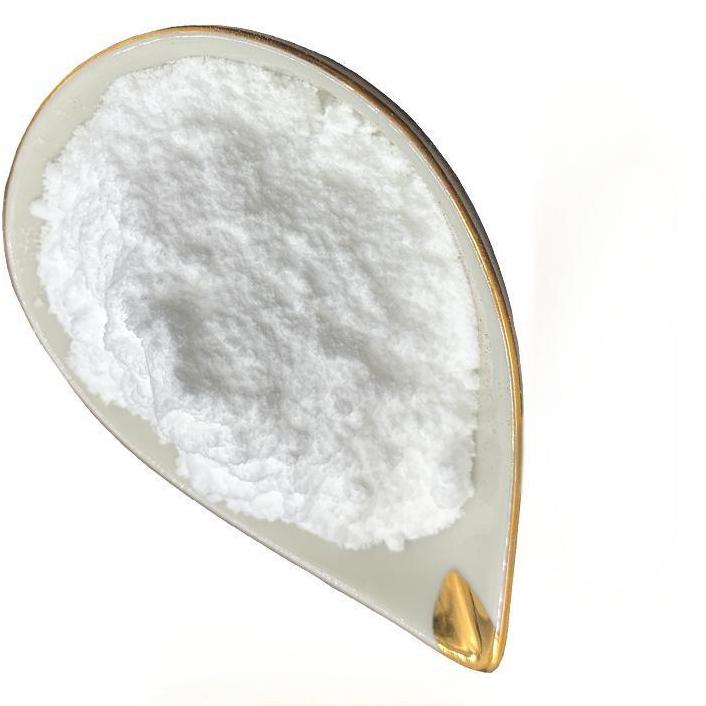What Are the Uses of Feed-Grade Mannan Oligosaccharides in Poultry Nutrition?
Manno-oligosaccharides (MOS) are widely found in the cell wall of many microorganisms, such as konjac flour, guar gum, and tanner's gum, etc. The feeding manno-oligosaccharides are mainly derived from yeast cell wall. Manno-oligosaccharides (MOS) for feed use are mainly derived from a class of oligosaccharides extracted from yeast cell walls, with glucose or mannose as the unit molecule, and are mixtures of dimeric, trimeric, or tetrameric glycans and other structural components [ 1 ]. In recent years, mannan-oligosaccharides (MOS) have been widely used as feed additives in animal production, and have the potential to replace antibiotics as animal healthcare agents due to their advantages of small dosage, naturalness, non-residue, and high stability, and their ability to regulate the physiological health of the intestinal tract as well as their dual role in immunomodulation.
1 Physicochemical properties and effects of manno-oligosaccharides
1.1 Physical and chemical properties
The sweetness of mannan oligosaccharide is less than sucrose, soluble in water and some polar solvents, easy to precipitate or crystallize in organic solvents. It is stable under normal physiological pH and feed processing conditions, and its viscosity decreases with increasing temperature and increases after cooling. The MOS extracted from yeast cell wall was processed at high temperature (121 ℃, 20 min) in feed processing, and its structure and function remained intact. Glycoligosaccharides and some functional oligosaccharides have similar structure with many feed fibers, and some of their chemical bonds cannot be broken by digestive enzymes and acid-base changes in the animal intestine, therefore, the small intestine is almost unable to destroy and utilize glycoligosaccharides.
1.2 Biological functions
MOS is structurally stable, not easily digested by animals and cannot be utilized by harmful bacteria, but can be utilized by beneficial bacteria in the digestive tract (e.g., Bifidobacteria and Lactobacillus).MOS can improve the composition of microorganisms in the intestinal tract, which has a beneficial health care effect on the host.MOS can recognize, adhere to, and exclude harmful bacteria, which accelerates the excretion of harmful bacteria from the intestinal tract, enhances the non-specific immune function of the animal, and increases the resistance of the animal organism.MOS can also be used as an antimicrobial agent in the intestinal tract. MOS can recognize and adhere to some harmful bacteria, accelerate the excretion of harmful bacteria from the intestines, enhance the non-specific immune function of animals and improve the resistance of animals.
1.2.1 Impact on the intestinal microecology
The effect of MOS on the intestinal microecological environment is mainly realized by promoting the growth and reproduction of beneficial intestinal bacteria, and the adhesion and exclusion of harmful bacteria. Since the cell walls or villi of enteropathogenic bacteria (E. coli, Salmonella, Clostridium difficile, etc.) contain exogenous lectins that can specifically bind to the sugar residues in the intestinal wall cells, and probiotics (Lactobacillus, etc.) do not have exogenous lectins, MOS does not have an adhesive and exclusionary effect on the beneficial bacteria.
Ghasemian et al. showed that oligomeric MOS in diets could rapidly dislodge E. coli adhering to the intestinal epithelial cell wall, whereas glucose and galactose had no effect [2]. This mechanism of action has been demonstrated in a number of experimental studies, and Guedes et al. found that the addition of MOS to rabbit diets significantly reduced the mass concentration of E. coli in the cecum and colon, and increased the mass concentration of Lactobacillus and Bifidobacterium in the cecum [3]. Zhang et al. showed that MOS could significantly increase the number of Bifidobacteria and Lactobacillus in the cecum and ileum of laying hens and decrease the number of E. coli in the intestinal tract [4]. Wen Ruozhu et al. showed that MOS could promote the growth of beneficial bacteria such as Lactobacillus and inhibit the growth of harmful bacteria such as Clostridium spp. in the intestine of broiler chicks by using PCR-DGGE technique [ 5 ].
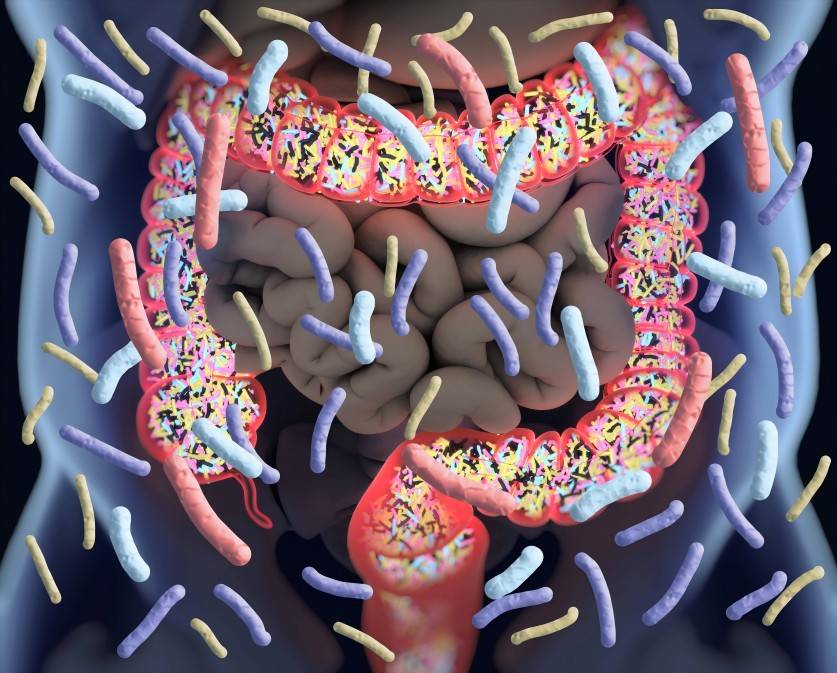
1.2.2 Effects on the morphologic structure of the animal small intestine
The small intestine is the main place of nutrient absorption, MOS can change the morphology of small intestine mucosa, increase the height and density of villi, so that the absorption area of small intestine villi can be enlarged, which is conducive to the digestion and absorption of nutrients in the intestinal tract. Meng Yan et al. added mannan oligosaccharide to broiler feed, and the results showed that mannan oligosaccharide could improve the height of intestinal villi, depth of crypts, thickness of mucosa, and surface area of villi in the small intestine, and promote the digestion and absorption in the small intestine, thus improving the growth performance of animals [ 6 ].
Zhang et al. added MOS to shrimp feed and showed that it promoted the morphologic development of intestinal microvilli structure of shrimp and increased the specific growth rate of the organism [ 7 ]. Liu Aijun et al. studied the effect of mannan oligosaccharide on the intestinal structure and function of Oniola tilapia, and found that the addition of mannan oligosaccharide could significantly increase the height, width and density of small intestinal villi, which was conducive to the expansion of the intestinal absorption area and nutrient digestive utilization, thus improving the growth performance of the animal organisms [ 8 ].
1.2.3 Regulation of the immune system of the animal body
MOS are a new class of antigenically active substances that are immunogenic and stimulate the body to generate an immune response. The specific immune response of the gastrointestinal tract of animals is dominated by antibodies, and mucosal antibodies directly kill bacteria by inhibiting the adhesion of invading bacteria and toxins to the intestinal epithelium and releasing mediators. Ma Zhihong et al. tested immunocompromised mice and found that macrophage phagocytosis rate and phagocytic index of mice in the MOS group increased significantly, indicating that MOS can increase the non-specific immunity of mice [ 9 ].
Wu Chunzao et al. added MOS to piglet feed and significantly increased the content of immunoglobulin in serum (P<0.05)[10] . Jin Yadong et al. added mannan oligosaccharide to the milk of calves, and found that it could significantly improve the growth performance and immune resistance of cattle (P<0.05)[11] . Wang Jiying et al. used the ginseng as the research object and found that the addition of mannan oligosaccharide to the diet could improve the immunity of the ginseng[12] . By adding different concentrations of mannan-oligosaccharides to broiler diets, Gao Lin showed that mannan-oligosaccharides had a positive effect on serum immunity indexes of broilers, which could improve the immunity level of the body and promote the development of immune organs[13] . You Jinming et al. found that the addition of mannan-oligosaccharides and sodium butyrate to diets significantly improved the growth performance and immune function of weaned piglets[14] .
2 Application of manno-oligosaccharides in Animal Production
2.1 Aquaculture
Addition of mannan oligosaccharide to aquafeed is beneficial to increase the growth rate and feed conversion efficiency of aquatic animals. Liu Aijun et al. showed that the addition of MOS 0.5% to tilapia feed could increase the weight gain rate, dry matter digestibility and protein digestibility of tilapia [ 8 ]. Tan Chonggui et al. showed that MOS 0.4% significantly improved the growth performance of shrimp Penaeus vannamei, reduced the bait coefficient, and significantly increased the activities of some enzymes (e.g., lysozyme, gastro-white enzyme, and hepato-pancreatic lipase) (P<0.05)[15] .
Yu Yanmei et al. added konjac mannan oligosaccharide 0.1%, 0.2%, 0.3% and yeast mannan oligosaccharide 0.3% to the basal diet of healthy Pelteobagrus fulvidraco, and showed that the konjac mannan oligosaccharide 0.2% group had the highest mass gain and the lowest bait coefficient, and the yeast mannan oligosaccharide 0.3% group also significantly promoted the growth of Pelteobagrus fulvidraco when compared to the control group, but the results were not as good as that of konjac mannan oligosaccharide 0.2% group. However, its effect was not as good as that of the konjac mannan oligosaccharide 0.2% group [16].
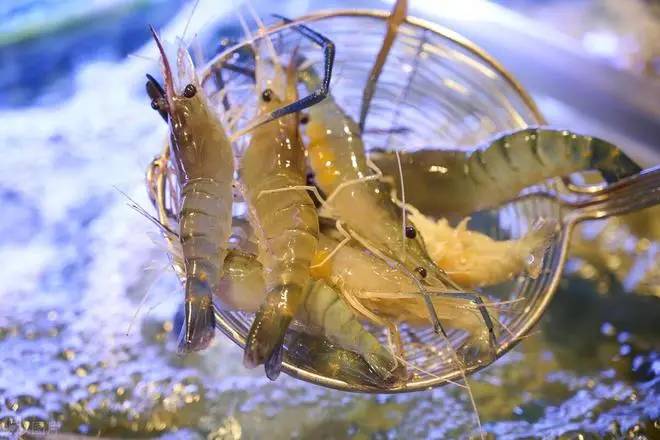
2.2 Poultry production
In poultry farming, appropriate amount of MOS has a promoting effect on beneficial bacteria (Lactobacillus and Bifidobacterium, etc.) in the gastrointestinal tract, which can reduce the value-added of pathogenic bacteria and improve immunity, thus reducing the occurrence of diseases and improving the production performance. Yan Guiling et al. showed that the addition of brewer's yeast-derived mannan oligosaccharide to broiler diets significantly reduced the number of Escherichia coli and Salmonella spp. in the cecum (P<0.05), and improved the immune function of broilers[17] . Li Qilin et al. used mannan oligosaccharide as a substitute for antibiotics and found that the addition of mannan oligosaccharide was effective in increasing the survival rate, daily weight gain and reducing the feed-to-weight ratio of broilers[18] . Xue Jun et al. showed that mannan-oligosaccharides could increase the daily weight gain, feed intake and feed conversion ratio, and reduce the cholesterol content of quail[19] . Wu Wei et al. added mannan oligosaccharide to broiler diets and showed that mannan oligosaccharide could improve the performance of broilers[20] . Zhu Xiuqian et al. showed that the addition of mannan oligosaccharide 0.2% to the diet significantly increased the daily weight gain and feed conversion rate of broiler chickens (P<0.05)[21] .
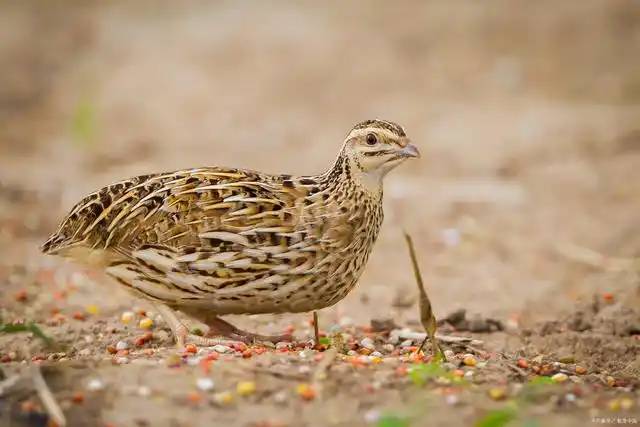
2.3 Pig production
Currently, the research on MOS in pigs mainly focuses on the piglet stage, especially weaned piglets, where MOS has the dual effects of adsorption of intestinal pathogens and immunomodulation in piglets. Hang Suqin et al. added mannan oligosaccharide to piglet diets and found that the addition of mannan oligosaccharide significantly increased the daily weight gain and feed conversion ratio of piglets compared with the control group (P<0.05), and improved the performance of piglets[22] .
Li Yuxin found that the daily weight gain and feed conversion efficiency of piglets weaned at 28 days of age were significantly increased (P<0.05) in the group with the addition of Picrorhizobium mannan 0.2% after feeding 0, 0.1%, 0.2% of Picrorhizobium mannan[23] . Wu Chunzao et al. showed that the addition of MOS to weaned piglet diets significantly increased the daily weight gain of weaned piglets and reduced the feed-to-meat ratio (P<0.05)[10] . Duan Xudong added mannan-oligosaccharides to piglet diets and showed that the addition of mannan-oligosaccharides to piglet diets improved piglet growth performance and part of the non-specific immune response as well as the intestinal microecological environment [24].
2.4 Ruminant feed
Due to the strong degradation of oligosaccharides in the rumen of ruminants, and the digestion of cellulose and hemicellulose in feed by rumen microorganisms also produces a large amount of oligosaccharides, functional oligosaccharides have been less studied in ruminant nutrition. Xiao Yu et al. studied the effects of exogenous mannan oligosaccharides on serum biochemical and antioxidant indices in dairy goats, and the results showed that serum malondialdehyde and gammaglutaminase activity decreased, while serum globulin and serum phosphorus increased significantly, indicating that the addition of MOS can increase the antioxidant capacity of dairy goats, and improve the body's lipid metabolism and protein synthesis[25] . Gao Tingting et al. showed that MOS, fructooligosaccharides (FOS) and soybean oligosaccharides significantly increased the concentration of volatile fatty acids and bacterial proteins in the culture broth (P<0.05) by in vitro batch cultivation[26] . Bao Yan'an et al. added MOS to the diet of dairy cows and found that it significantly increased milk production (P<0.05) [27].
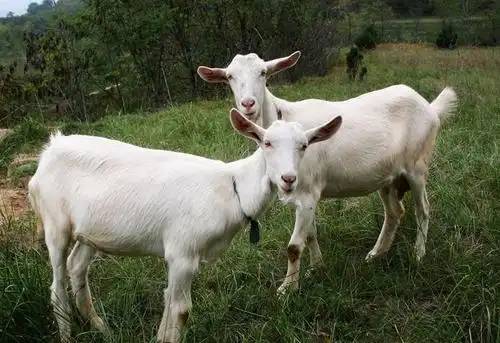
3 The main factors affecting the effect of mannan oligosaccharides
There are many factors affecting the application of mannan oligosaccharide to animals, among which the type of mannan oligosaccharide is one of the most important factors, including the monosaccharide linkage of mannan oligosaccharide, the purity and degree of polymerization of mannan oligosaccharide, and the biological activity of mannan oligosaccharide, etc., which will have different impacts on its effect. The level of addition of mannan oligosaccharides will also affect the effect of mannan oligosaccharides. Insufficient addition of mannan oligosaccharides can not achieve the effect of proliferation; excessive addition of mannan oligosaccharides will increase the cost of feeds, and will result in the poor palatability of feeds, reduce the intake of the animals, and may cause diarrhea in the animals. The intestinal microflora of animals at different developmental stages will change according to the developmental stage.
Therefore, the age of the animal is a direct factor affecting the effect of mannan oligosaccharide, such as after weaning, the concentration of E. coli and other pathogens in piglets rises, and piglets are prone to diarrhea at this time, so adding a certain concentration of mannan oligosaccharide at this stage can effectively reduce the proliferation of pathogenic bacteria. In addition, the synergistic effect of mannan oligosaccharide and other substances will also affect its effect, such as oligosaccharide and prebiotics synergistic effect, the effect is better than single addition, it can prolong the action time of feeding microorganisms and the number of viable microorganisms in hindgut, and promote beneficial microorganisms in the intestines to colonize and grow.
4 Summary
There are still a lot of unresolved questions about the mechanism and effect of mannan oligosaccharide, and the popularization and application of mannan oligosaccharide in aquaculture is still somewhat limited. Therefore, it is necessary to strengthen the research on the relationship between the physicochemical structure of mannan oligosaccharides and their functions, to clarify the mechanism of mannan oligosaccharides; to study the appropriate amount of mannan oligosaccharides to be added in different physiological states of different animals and the way of adding mannan oligosaccharides, as well as the synergistic and downward effects when used in conjunction with other nutrient factors or feed additives (acidifiers, antibiotics, biotinics), and to conduct systematic research on the effects of different types of diets on mannan oligosaccharides. At the same time, the effects of different types of diets on mannan-oligosaccharides were systematically studied to lay a theoretical foundation for the rational application of mannan-oligosaccharides in feeds.
References:
[ 1 ] Q. Kou, M. Liang, L. Tao, et al. Research and application of mannan oligosaccharide[J]. Food and Feed Industry, 2012, 12(5): 57-59.
[ 2 ] Ghasemian M, Jahanian R. Dietary mannan-oligosaccharides supplementation could affect performance, immunocompetence, se- rum lipid metabolites, intestinal bacterial populations, and ileal nutrient digestibility in aged laying hens[J]. Animal Feed Science & Technology, 2016, 213: 81-89.
[ 3 ] Guedes C M, Mourao J L, et al. Effects of age and MOS supple- mentation on production of volatile fatty acids in the caecum of rabbits[J]. Animal Feed Science & Technology, 2009, 150(3): 330-336.
[ 4 ] ZHANG Jian-Bin, CHE Xiang-Rong, YANG Hua. Effects of mannan-oligosaccharides on the intestinal flora of laying hens[J]. Feed Expo, 2010(5): 29-30.
[ 5 ] WEN Ruo-Zhu, JIANG Yun, LIU Ze-Xing, et al. Effects of mannan oligosaccharide on the development of intestinal microbiota in broiler chicks[J]. Journal of Zhejiang University: Agriculture and Life Sciences, 2011, 37(1): 83-90.
[ 6 ] MENG Yan, ZHANG Hui. Effects of mannan oligosaccharide on growth performance and intestinal mucosa morphology of broiler chickens[J]. China Feed, 2007(21): 30-32.
[ 7 ] Zhang J, Liu Y, Tian L, et al. Effects of dietary mannan oligosac- charide on growth performance, gut morphology and stress toler- ance of juvenile Pacific white shrimp, Litopenaeus vannamei[J]. Fish & Shellfish Immunology, 2012, 33(4): 1 027-1 032.
[ 8 ] Liu Aijun, Leng Xiangjun, Li Xiaoqin, et al. Effects of mannan oligosaccharide on growth, intestinal structure and non-specific immunity of Oniola tilapia[J]. Journal of Zhejiang University: Agriculture and Life Sciences, 2009, 35(3): 329-336.
[ 9 ] MA Zhi-Hong, JIN Jing, LIU Hong-Mei, etc. Effects of mannan-oligosaccharides on growth performance and immune function of common carp[J]. Effects of mannan oligosaccharide on the growth and immune function of carp[J]. Anhui Agricultural Science, 2010, 38(3): 1 291-1 292.
[10] WU Chun-zao, WANG Jian-hua. Effects of lactic acid bacteria and mannan oligosaccharide on growth and serum biochemical indexes of weaned piglets[J]. Jiangsu Agricultural Journal, 2011, 27(1): 94-99.
[11] JIN Yadong, ZHANG Lili, CHEN Shao-Shu, et al. Effects of mannan-oligosaccharides addition on growth performance, fecal flora and serum immunity indexes of lactating calves[J]. China Animal Husbandry and Veterinary Medicine, 2016, 43(11): 2 922-2 930.
[12] WANG Ji-Ying, SONG Zhi-Dong, LI Pei-Yu, et al. Effects of feed supplementation with galactomannan on growth, body wall nutritional composition and immunity of juvenile ginseng[J]. Chinese Aquatic Sciences, 2014, 21(2): 310-319.
[13] Gao Lin. Effect of mannan oligosaccharide on immune performance of broiler chickens[J]. Agricultural Technology and Equipment, 2015(4): 56-58.
[14] YU Jinming, FU Jianfu, WANG Zirui, et al. Effects of sodium butyrate and mannan oligosaccharide on growth performance and immune function of weaned piglets[J]. Effects of sodium butyrate and mannan oligosaccharide on growth performance and immune function of weaned piglets[J]. Journal of Animal Nutrition, 2010, 22(2):346-351.
[15] TAN Chonggui, LENG Xiangjun, LI Xiaoqin, et al. Effects of polysaccharides, oligosaccharides and proteases on growth, digestive enzyme activities and serum non-specific immunity of Penaeus vannamei[J]. Journal of Shanghai Ocean University, 2013, 22(1): 93-99.
[16] YANMEI YU, ZHIXIN WU, XIAOXUAN CHEN. Effects of konjac mannan oligosaccharide on non-specific immune function and growth of Pelteobagrus fulvidraco[J]. Journal of Huazhong Agricultural University, 2010, 29(3):351-355.
[17] YAN Guiling, YUAN Jianmin, LIU Yuming, et al. Effects of brewer's yeast mannan oligosaccharide on intestinal microbiology and immune function of broilers[J]. Effects of brewer's yeast mannan oligosaccharide on intestinal microbiology and immune function of broiler chickens[J]. Journal of China Agricultural University, 2008, 13(6):85-90.
[18] LI Qi-Lin, LI Yan-Peng, WANG Shi-Chang. Effects of antibiotic replacement with mannan oligosaccharide on the performance of broiler chickens[J]. Anhui Agricultural Science, 2008, 36(6): 2 350.
[19] XUE Jun, JU Guichun, ZHANG Aiwu. Effects of different levels of mannan oligosaccharide on growth performance and serum cholesterol of quail[J]. Effects of different levels of mannan-oligosaccharides on growth performance and serum cholesterol of partridge[J]. Journal of Economic Zoology, 2008, 12(1): 30-33.
[20] WU Wei, ZHENG Yunduo, JIA Linan, et al. Effects of mannan oligosaccharide on early growth performance and physicochemical indexes of broiler chicks[J]. Effects of mannan oligosaccharide on early growth performance and related physicochemical indexes of broiler chicks[J]. Chinese Poultry, 2017, 39(1): 34-37.
[21] ZHU Xiuqian, ZHANG Jinghai. Effects of mannan-oligosaccharides and Chinese herbs on the performance of broiler chicks[J]. Shandong Animal Husbandry and Veterinary Medicine, 2011, 32(10): 1-3.
[22] HANG Suqin, HUANG Ruihua, ZHU Weiyun. Effects of mannan-oligosaccharides on production performance and blood biochemical indexes of weaned piglets[J]. Chinese Journal of Veterinary Science, 2009, 29(2): 220-223.
[23] Li Yuxin. Effects of Picrorhizobium hippocastanum mannan on production performance and immunity of swine[D]. Beijing: China Agricultural University, 2015.
[24] Duan Xudong. Effects of dietary mannan-oligosaccharides on reproductive performance, immune function, offspring growth, immunity and intestinal microorganisms in sows[D]. Ya'an: Sichuan Agricultural University, 2013.
[25] XIAO Yu, LIN Yingting. Effects of mannan oligosaccharides on the immune function of animals[J]. Feed Research, 2010(7): 27-28.
[26] Gao Tingting, Qu Mingren, Wang Chengwei. Functional oligosaccharides and their applications in ruminant production[J]. China Feed, 2010(21): 12-16.
[27] Bao Yan'an, Xing Shufang, Xu Qinglong. Effects of mannan-oligosaccharides on milk yield and milk routine of Holstein cows[J]. Feed Research, 2009(2): 57-60.
-
Prev
What Are the Benefits of Mannan Oligo Saccharide in Rabbit Feeding?
-
Next
How Are Mannan Oligosaccharides(MOS) Used in Animal Feeding?


 English
English French
French Spanish
Spanish Russian
Russian Korean
Korean Japanese
Japanese